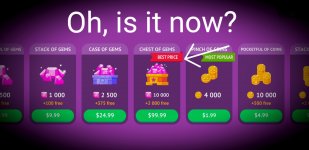Micro-Transactions - The Past & Future
Micro means "small" and transactions mean buying, selling, or participating in a trade of some kind. In the early years of gaming, individuals that were part of the retro timeline noticed that the option to purchase in-game add-ons such as cosmetics was never freely accessible. As Bethesda launched animal equipment in The Elder Scrolls for $ 2.50, the first-ever microtransaction sold by a major company was in 2006. It was created as an experimental test of the response of the market to DLC. The majority of players responded negatively, arguing that $2.50 was too expensive for an in-game cosmetic object.
Microtransactions first started with gamers having the option to purchase using a debit or credit card. Years later, when PayPal and other online payment processors grew popular, many companies started to integrate this payment facility into their games. Only in the last couple of years in the gaming industry have we seen an increase in excitement and passion for integrating cryptocurrency payments.

One of the largest and most successful coins that have risen over the years is known as Bitcoin, or BTC for short. In the year 2019 (two years ago) was at a value of just under £3000, which is around 4150USD$. As of today, Bitcoin stands at 45,000USD$ or £32,527. With Elon Musk's likes buying 1 billion dollars of the currency for Tesla, many other companies, including those in the gaming industry, are also finding ways to integrate it with their platforms.
The only disadvantage of larger firms introducing new forms of digital payments for Micro-Transactions is some users may be reluctant to change their purchasing habits. Some of the older generations would prefer to stick to more reliable, safe, and less volatile means of paying for cosmetics or upgrades in the game. For example, paying by debit, credit card, or pre-loaded gift cards. The most common upgrades we see in most games nowadays are skins, gacha, and loot boxes. Gacha is the equivalent in video games of seeing randomized vending machines being spawned. The terminology Gacha comes from Japensisae, which originally was meant for toy vending machines.

There is Psychology around purchasing microtransactions. To put it simply, the gaming industry sees a lot of gambling, the fear of missing out (limited stock or item), and finally greed or laziness not wanting to acquire the amount of knowledge to pass the next level. Unfortunately, many gamers get addicted to gambling, but besides from hotlines, the companies are not doing a lot to support or discourage users at its easy money and revenue for the business.
To conclude, many influences that are on YouTube and other large social media platforms with a huge follower base, discourage the idea of buying microtransactions as they believe video games should be like the olden days (retro era), where the title comes with everything that was advertised at the point of sale (POS). Thank you for reading today's Article, expect another one to be published two weeks from today which is the 24th of Feb, 2021.



